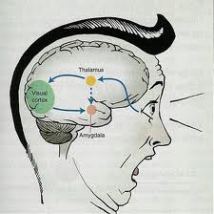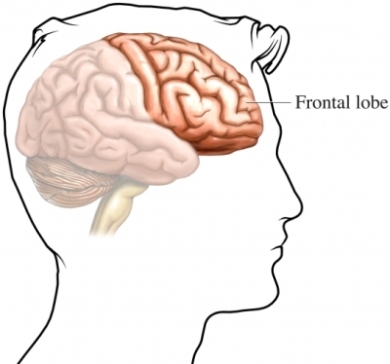I was recently diagnosed with Post Traumatic Stress Disorder (PTSD). Many people are aware of PTSD that comes from being in combat or from being mugged or sexually assaulted. All of those incidents can be an event that prompts PTSD. Fewer people probably have what I am calling medical PTSD – PTSD derived primarily from medical interventions that were traumatizing in some way. First, I think it is important that I lay out for you the criteria for the disorder.
CRITERION FOR PTSD
Criterion A: stressor
The person was exposed to: death, threatened death, actual or threatened serious injury, or actual or threatened sexual violence, as follows: (one required)
- Direct exposure.
- Witnessing, in person.
- Indirectly, by learning that a close relative or close friend was exposed to trauma. If the event involved actual or threatened death, it must have been violent or accidental.
- Repeated or extreme indirect exposure to aversive details of the event(s), usually in the course of professional duties (e.g., first responders, collecting body parts; professionals repeatedly exposed to details of child abuse). This does not include indirect non-professional exposure through electronic media, television, movies, or pictures.
Criterion B: intrusion symptoms
The traumatic event is persistently re-experienced in the following way(s): (one required)
- Recurrent, involuntary, and intrusive memories. Note: Children older than six may express this symptom in repetitive play.
- Traumatic nightmares. Note: Children may have frightening dreams without content related to the trauma(s).
- Dissociative reactions (e.g., flashbacks) which may occur on a continuum from brief episodes to complete loss of consciousness. Note: Children may reenact the event in play.
- Intense or prolonged distress after exposure to traumatic reminders.
- Marked physiologic reactivity after exposure to trauma-related stimuli.
Criterion C: avoidance
Persistent effortful avoidance of distressing trauma-related stimuli after the event:(one required)
- Trauma-related thoughts or feelings.
- Trauma-related external reminders (e.g., people, places, conversations, activities, objects, or situations).
Criterion D: negative alterations in cognitions and mood
Negative alterations in cognitions and mood that began or worsened after the traumatic event: (two required)
- Inability to recall key features of the traumatic event (usually dissociative amnesia; not due to head injury, alcohol, or drugs).
- Persistent (and often distorted) negative beliefs and expectations about oneself or the world (e.g., “I am bad,” “The world is completely dangerous”).
- Persistent distorted blame of self or others for causing the traumatic event or for resulting consequences.
- Persistent negative trauma-related emotions (e.g., fear, horror, anger, guilt, or shame).
- Markedly diminished interest in (pre-traumatic) significant activities.
- Feeling alienated from others (e.g., detachment or estrangement).
- Constricted affect: persistent inability to experience positive emotions.
Criterion E: alterations in arousal and reactivity
Trauma-related alterations in arousal and reactivity that began or worsened after the traumatic event: (two required)
- Irritable or aggressive behavior
- Self-destructive or reckless behavior
- Hypervigilance
- Exaggerated startle response
- Problems in concentration
- Sleep disturbance
Criterion F: duration
Persistence of symptoms (in Criteria B, C, D, and E) for more than one month.
Criterion G: functional significance
Significant symptom-related distress or functional impairment (e.g., social, occupational).
Criterion H: exclusion
Disturbance is not due to medication, substance use, or other illness.
Specify if: With dissociative symptoms.
In addition to meeting criteria for diagnosis, an individual experiences high levels of either of the following in reaction to trauma-related stimuli:
- Depersonalization: experience of being an outside observer of or detached from oneself (e.g., feeling as if “this is not happening to me” or one were in a dream).
- Derealization: experience of unreality, distance, or distortion (e.g., “things are not real”).
Specify if: With delayed expression.
Full diagnosis is not met until at least six months after the trauma(s), although onset of symptoms may occur immediately.
MY STORY…Well, sort of…
So…I meet criteria for PTSD because some horrible things happened to me in a couple of incidents when I was a child undergoing medical procedures. My life was threatened in one of those incidents. Details are not important here because 1) they can be triggering for other readers and 2) it does not appear to help me to retell my story.
Many people struggle with PTSD symptoms. This blog is about my journey – one that began very recently with the official diagnosis. I had the symptoms for many, many years but only recently was it diagnosed for what it is.
What I hope to get from writing this blog is a sense of meaning. Hopefully, I can reach others who are suffering as I am and let them know they are not alone. Secondly, I’d like to document my recovery with all its ups and downs, successes and failures. Lastly, I hope this is my own Phoenix Process, as the author Elizabeth Lesser puts it:
The transformational journey is a voyage with a hundred different names…I call it the Phoenix Process – in honor of the mythic bird with golden plumage whose story has been told throughout the ages. The Egyptians called the bird the Phoenix and believed that every five hundred years he renewed his quest for his true self. Knowing that a new way could only be found with the death his worn-out habits, defenses, and beliefs, the Phoenix built a pyre of cinnamon and myrrh, sat in the flames, and burned to death. Then he rose from the ashes as a new being – a fusion of who he had been before and who he had become. A new bird, yet ever more himself; changed, and at the same time the eternal Phoenix…you and I are the Phoenix. We too can reproduce ourselves from the shattered pieces of a difficult time…This is the Phoenix Process.
~Broken Open~

I am hoping that in my own Phoenix Process I can reclaim my body, my mind, and my spirit. Or rather let go of those things that need to die and be reborn into a body, mind, and spirit more like myself.




